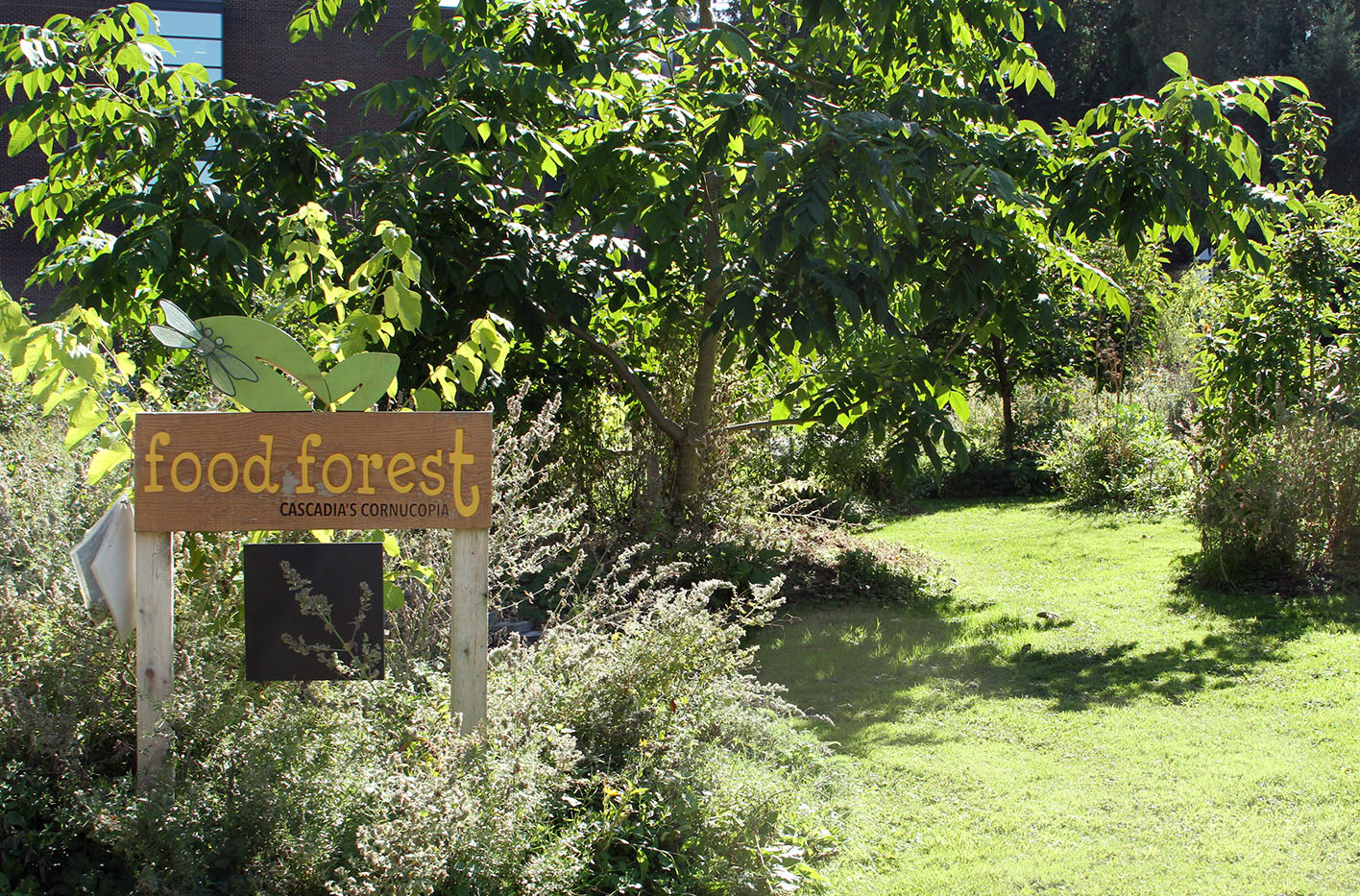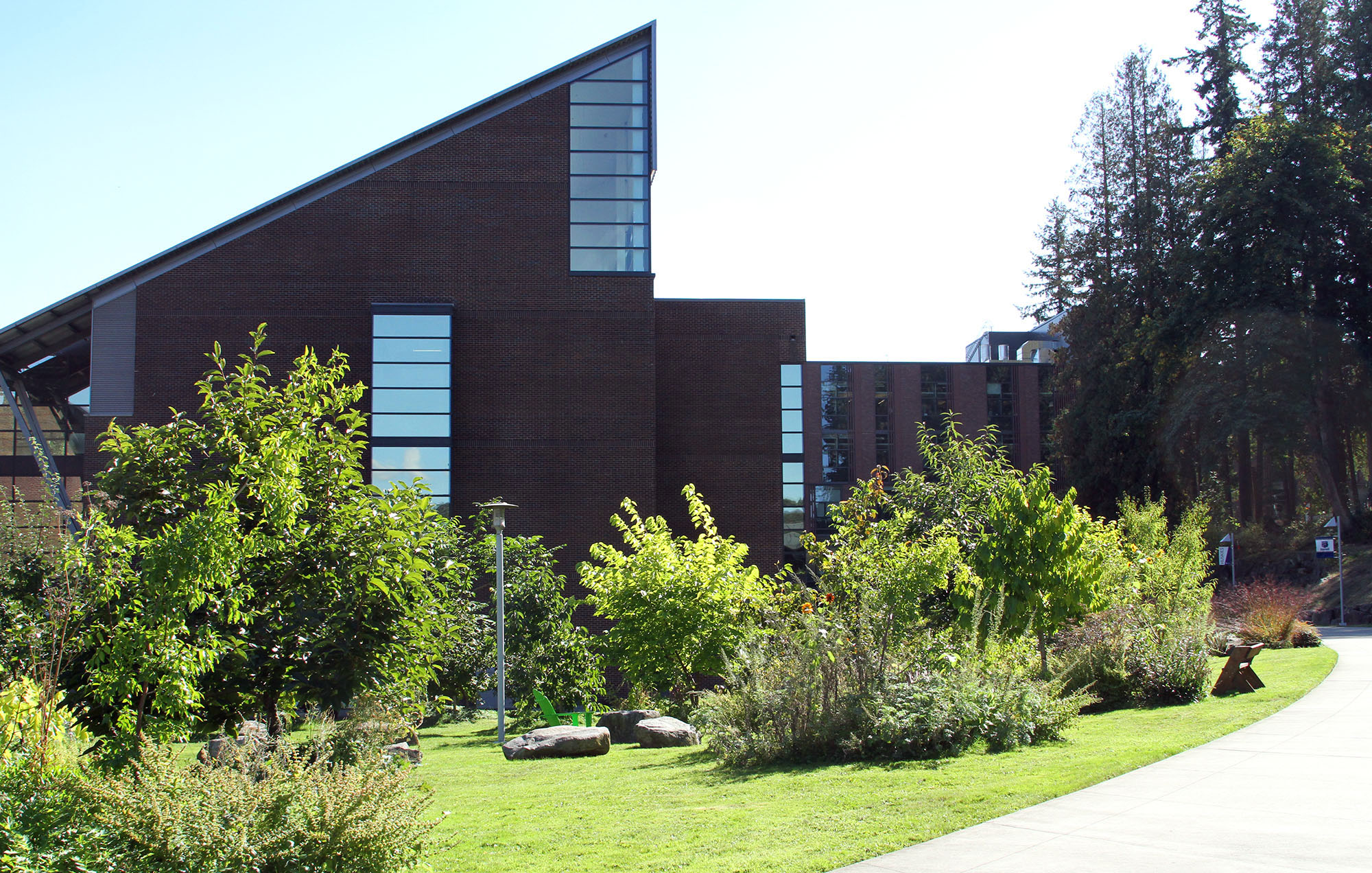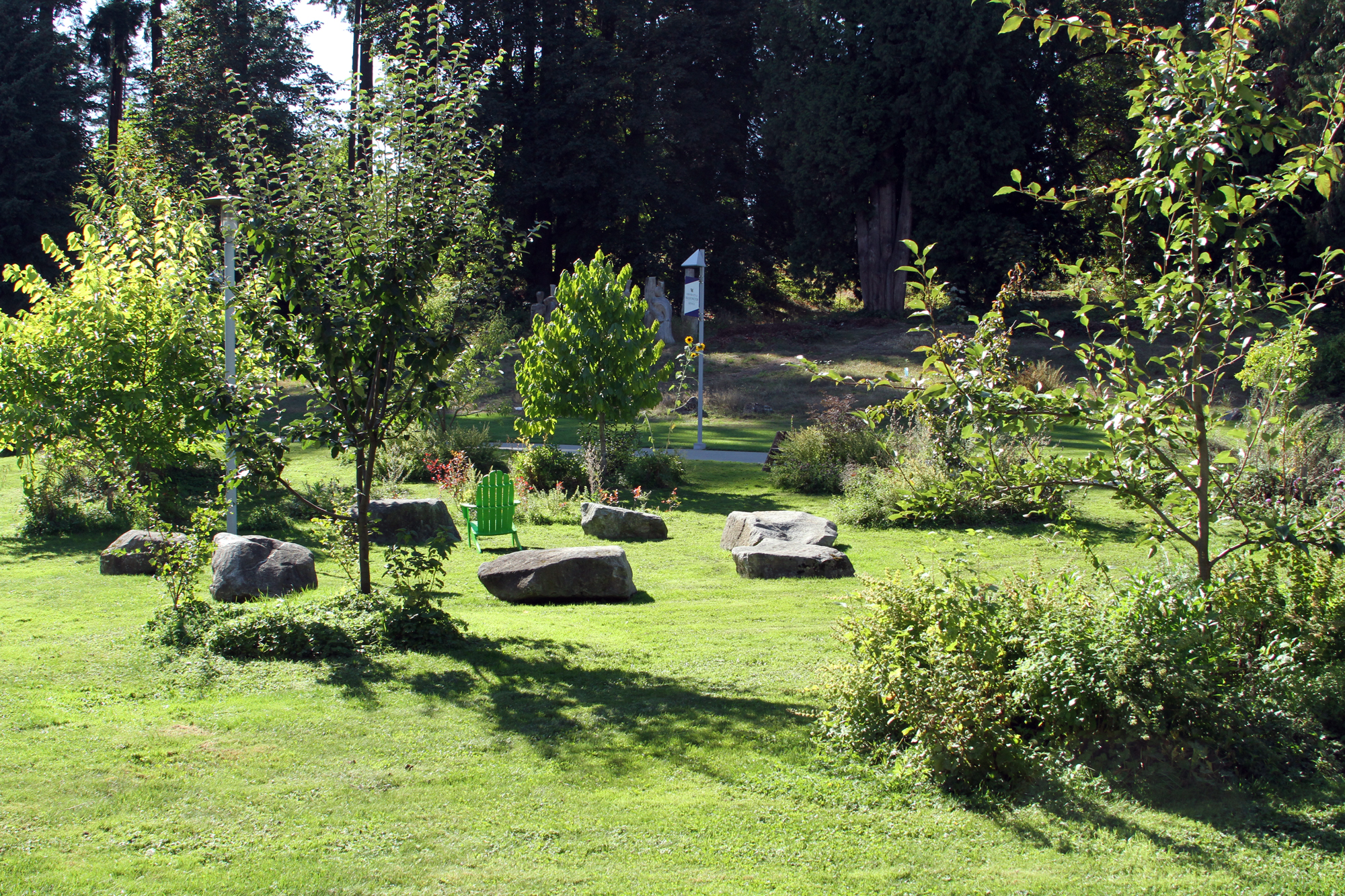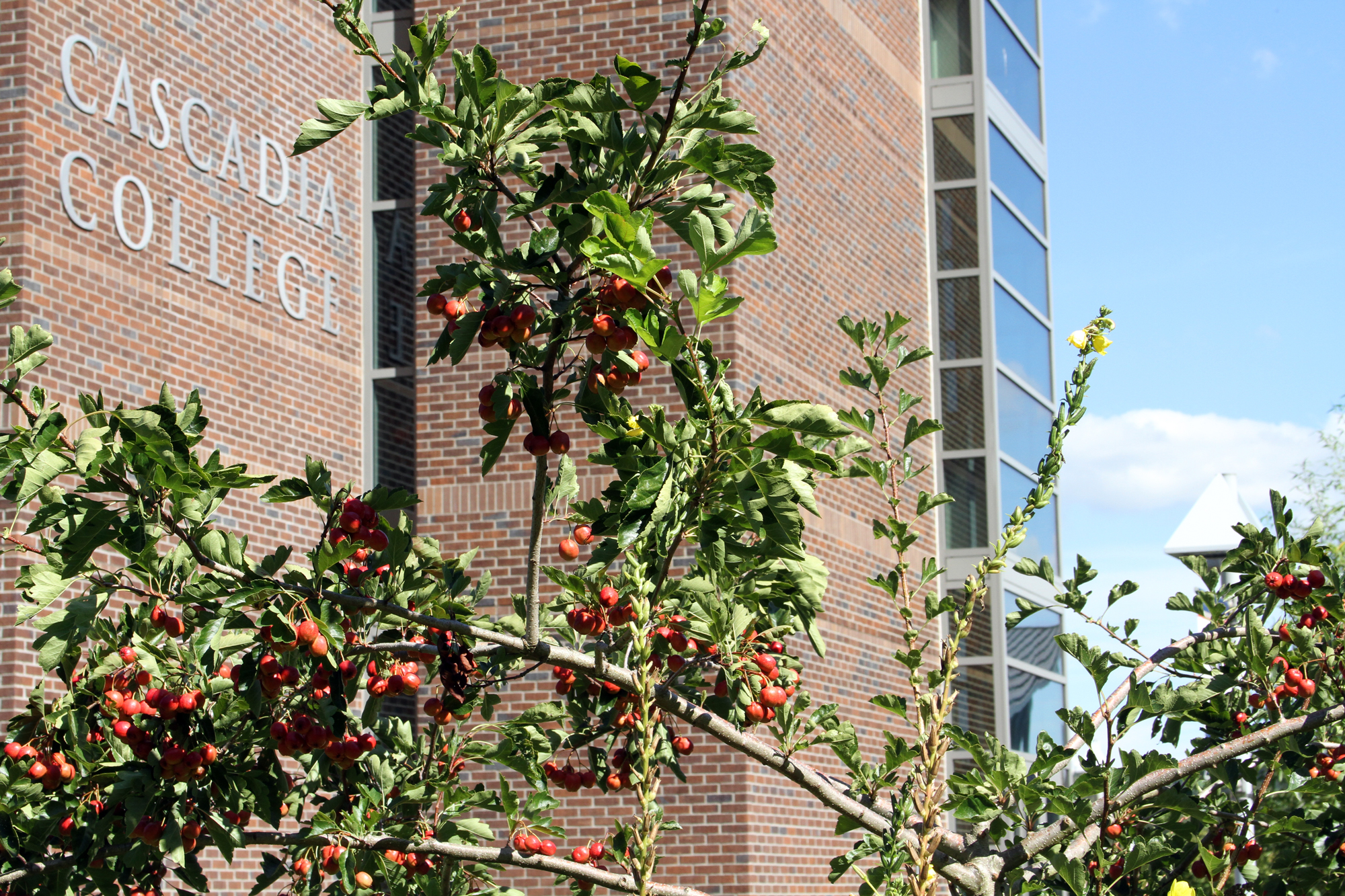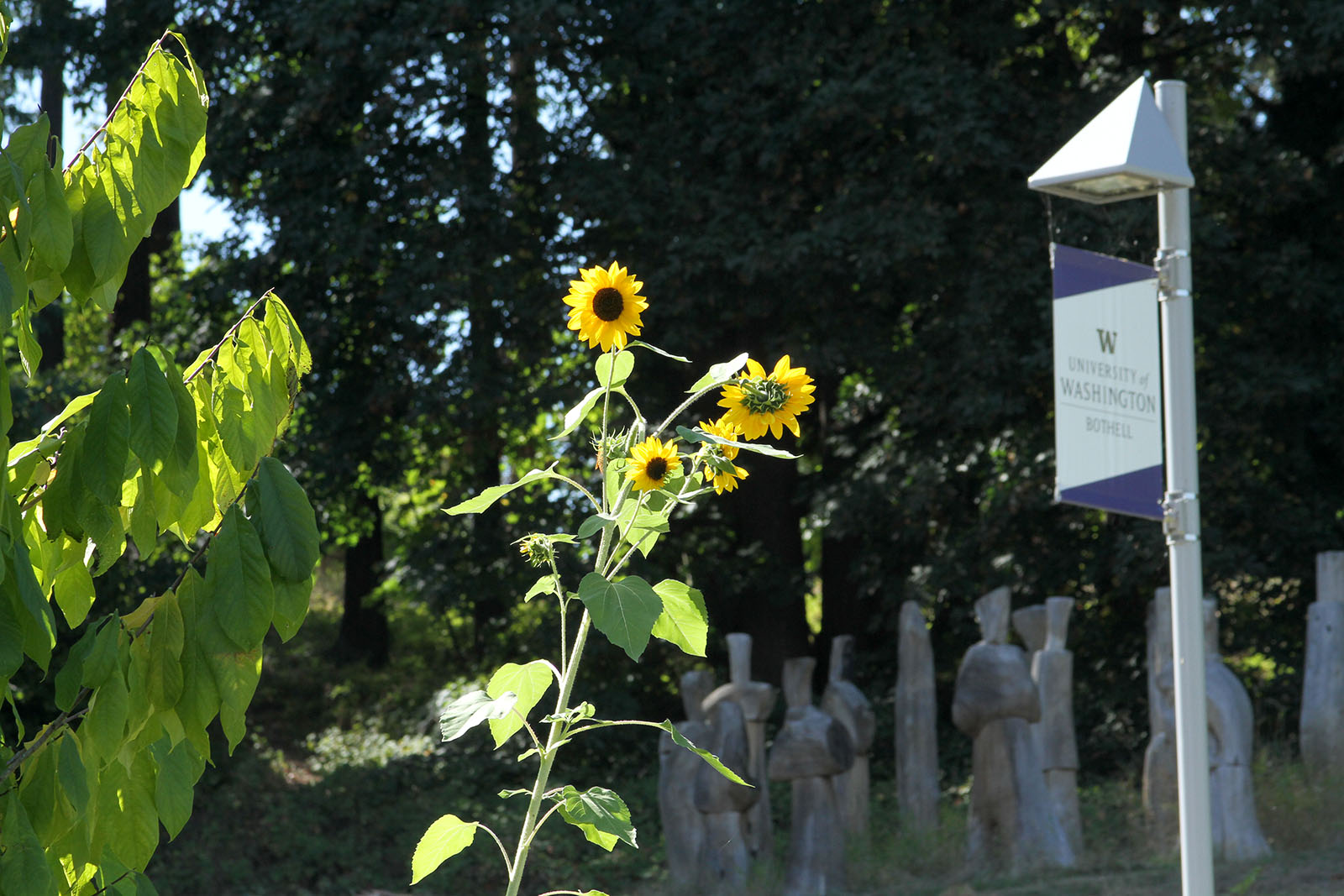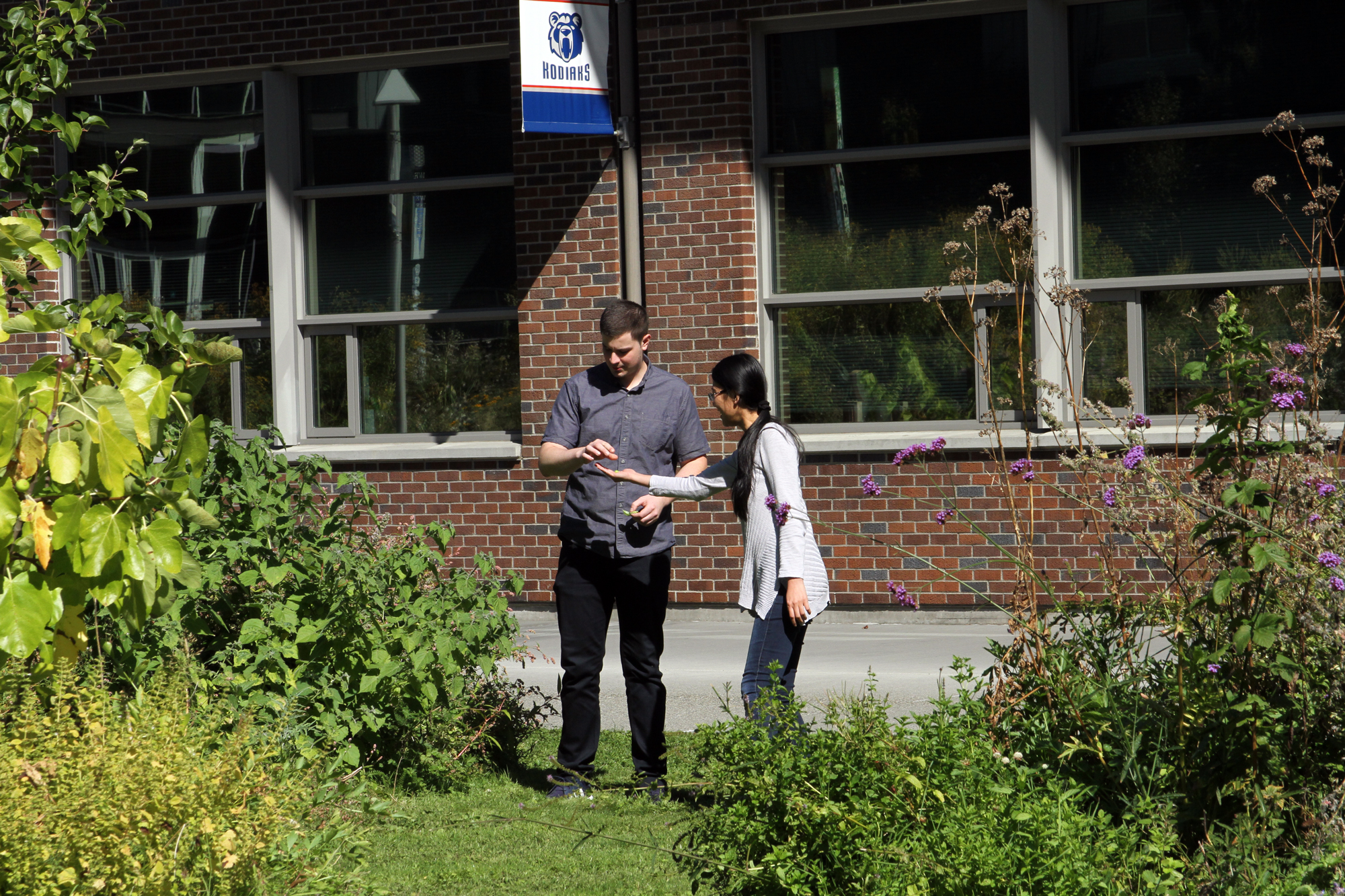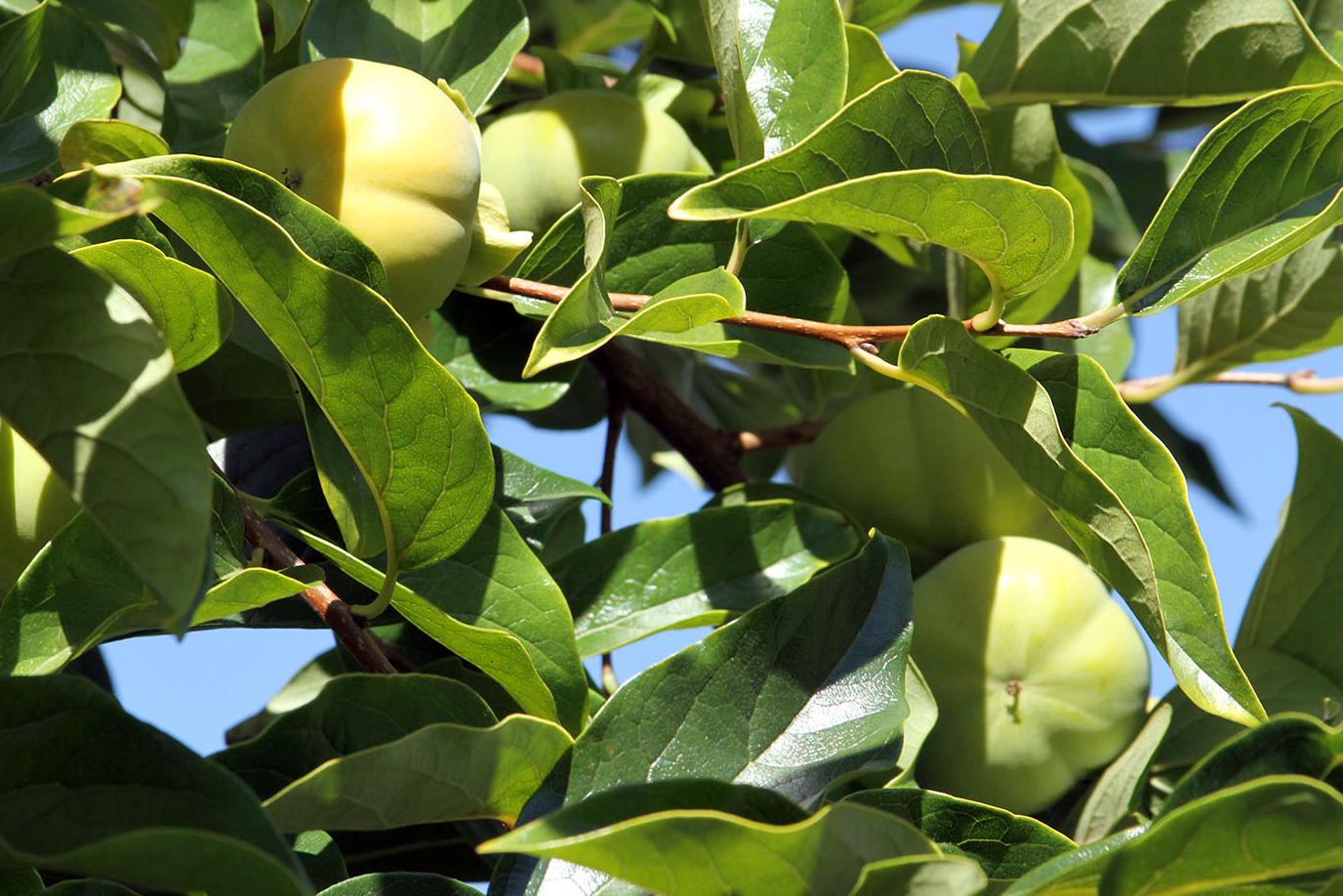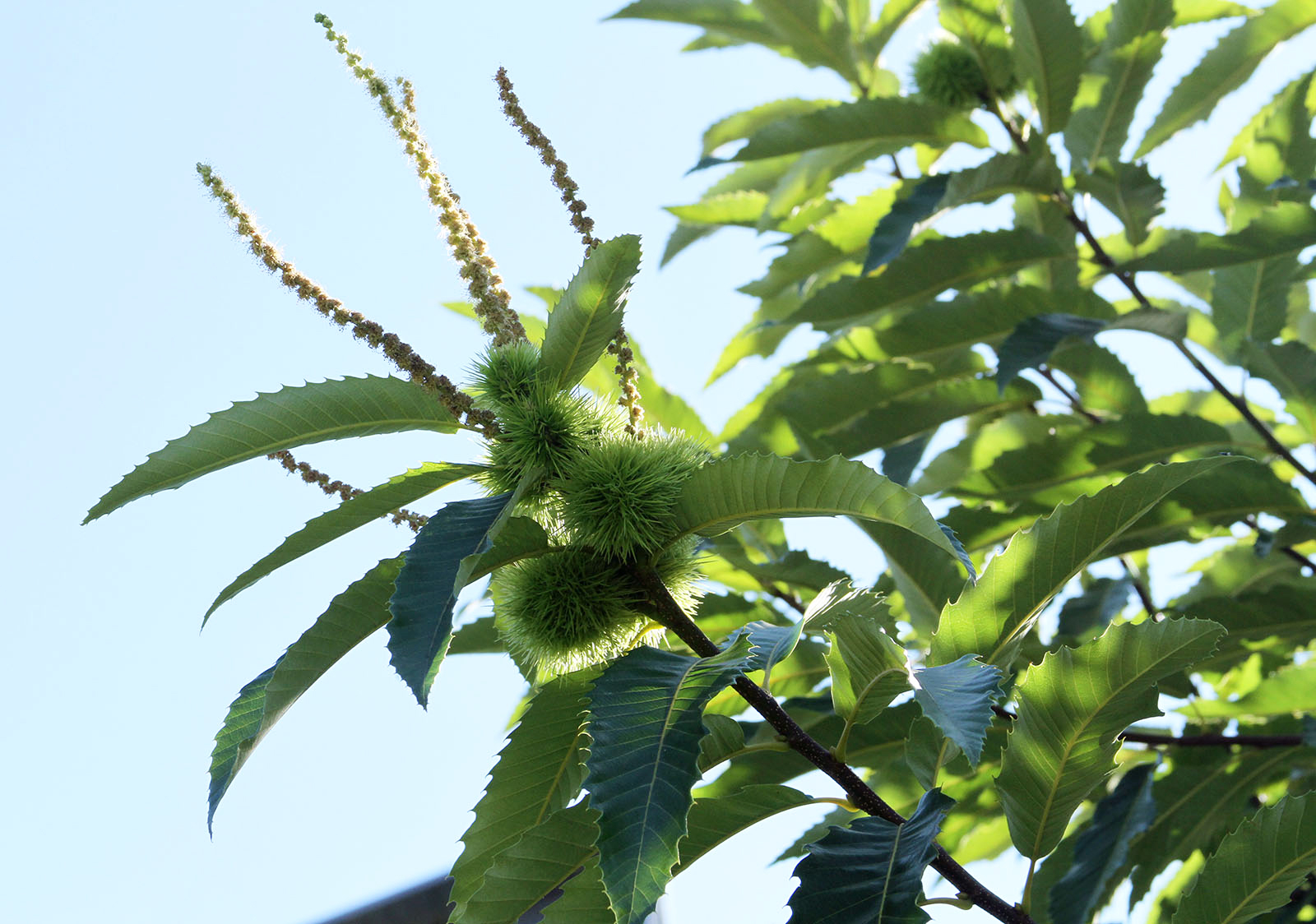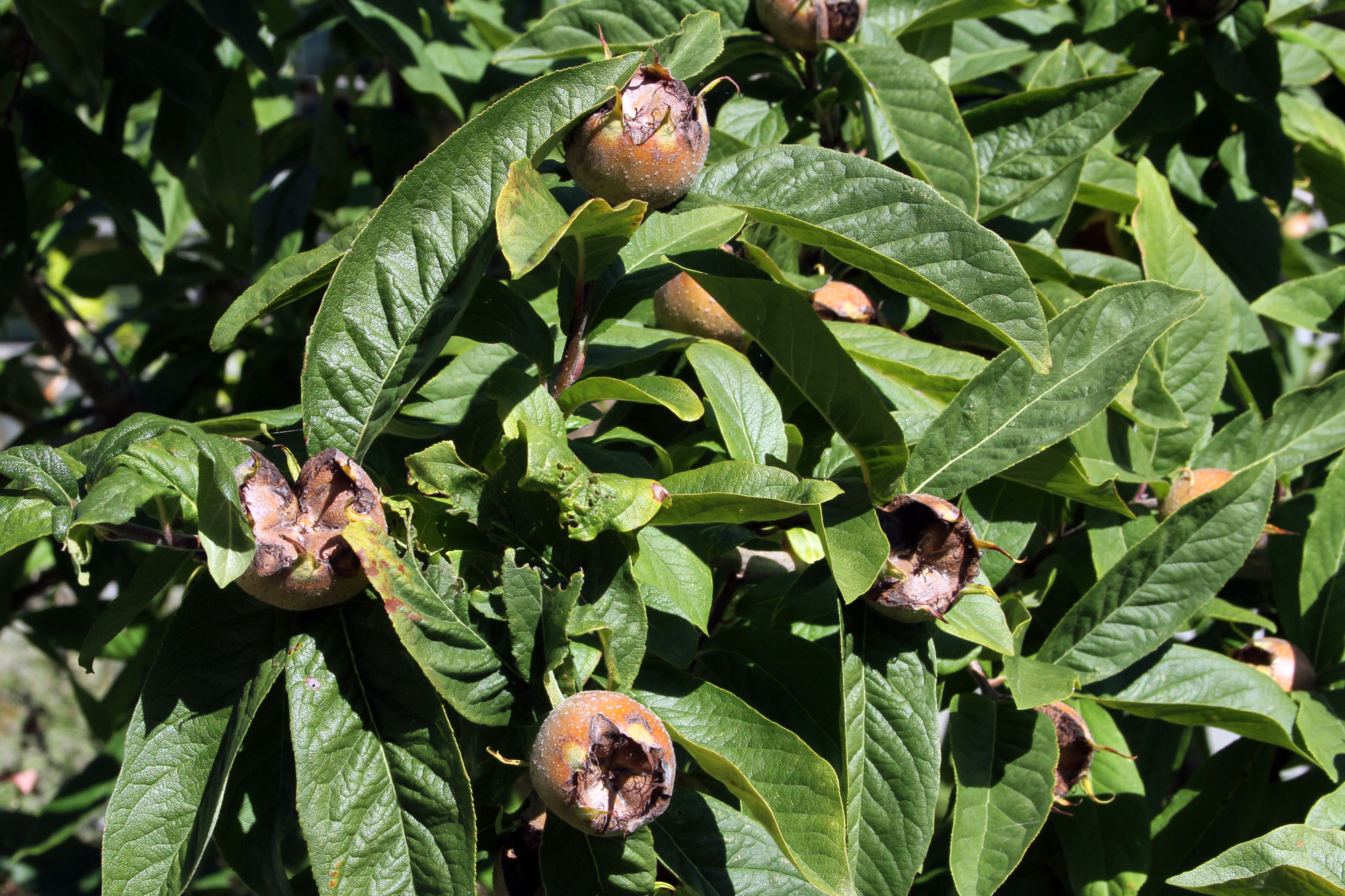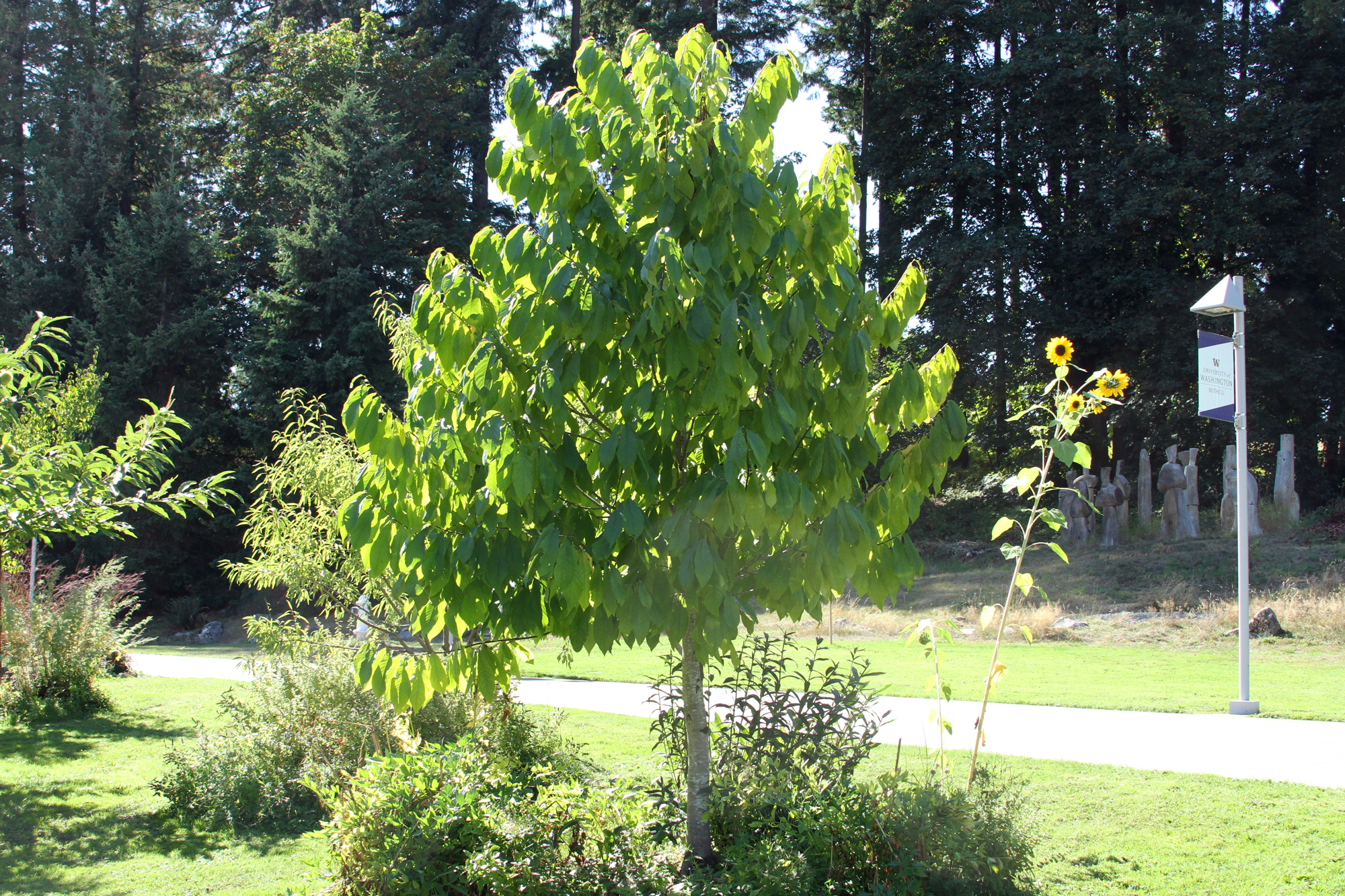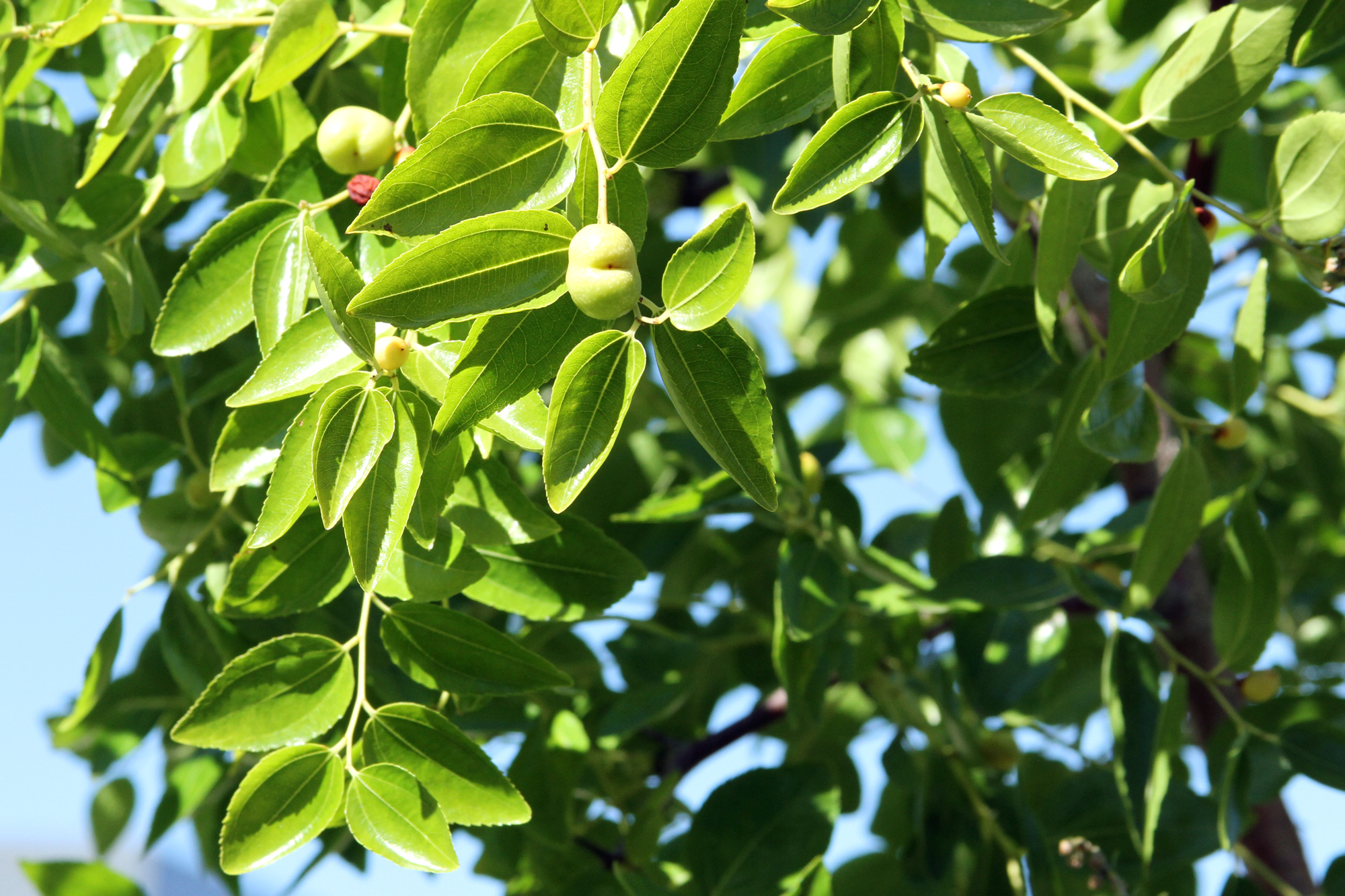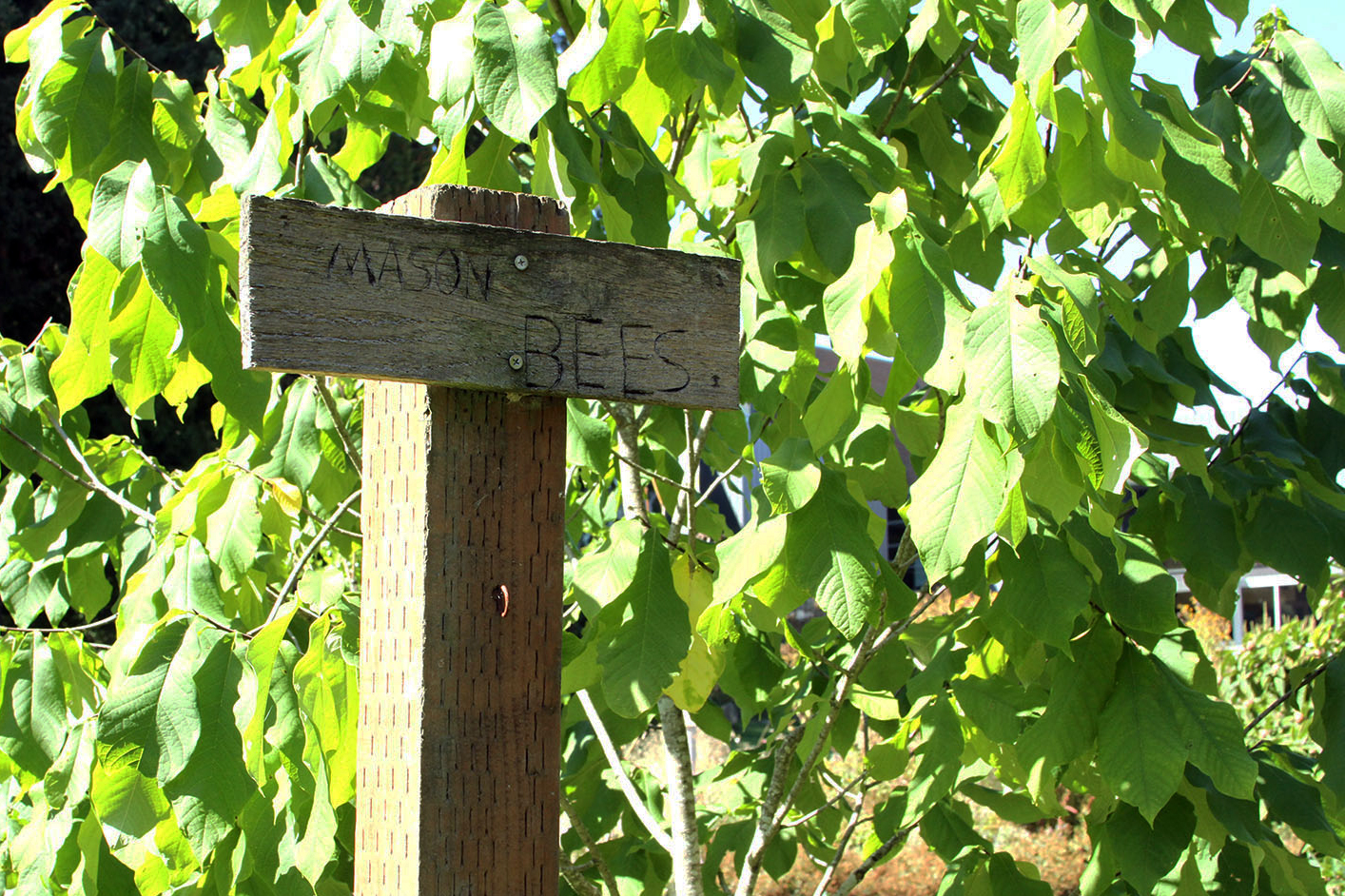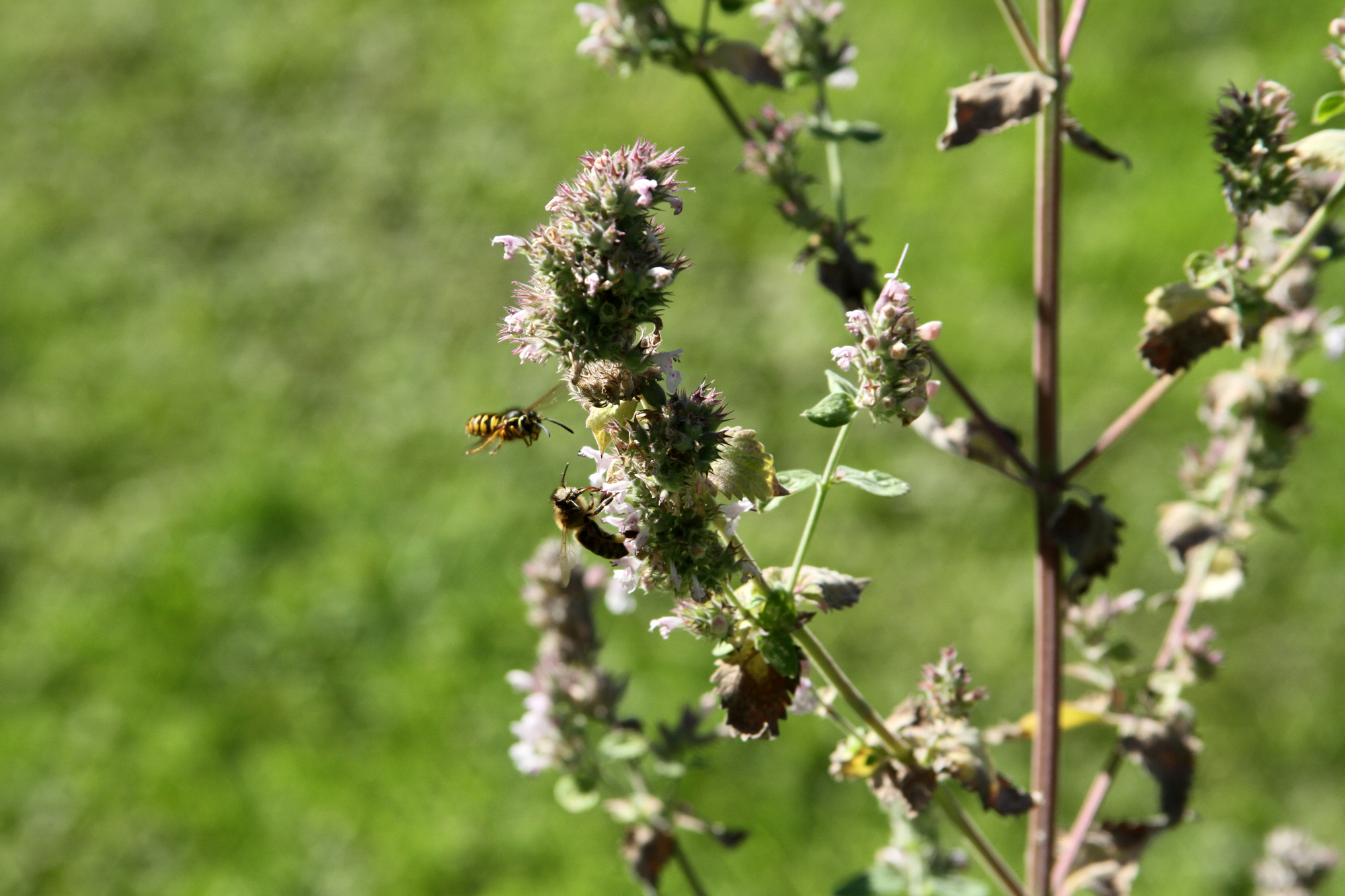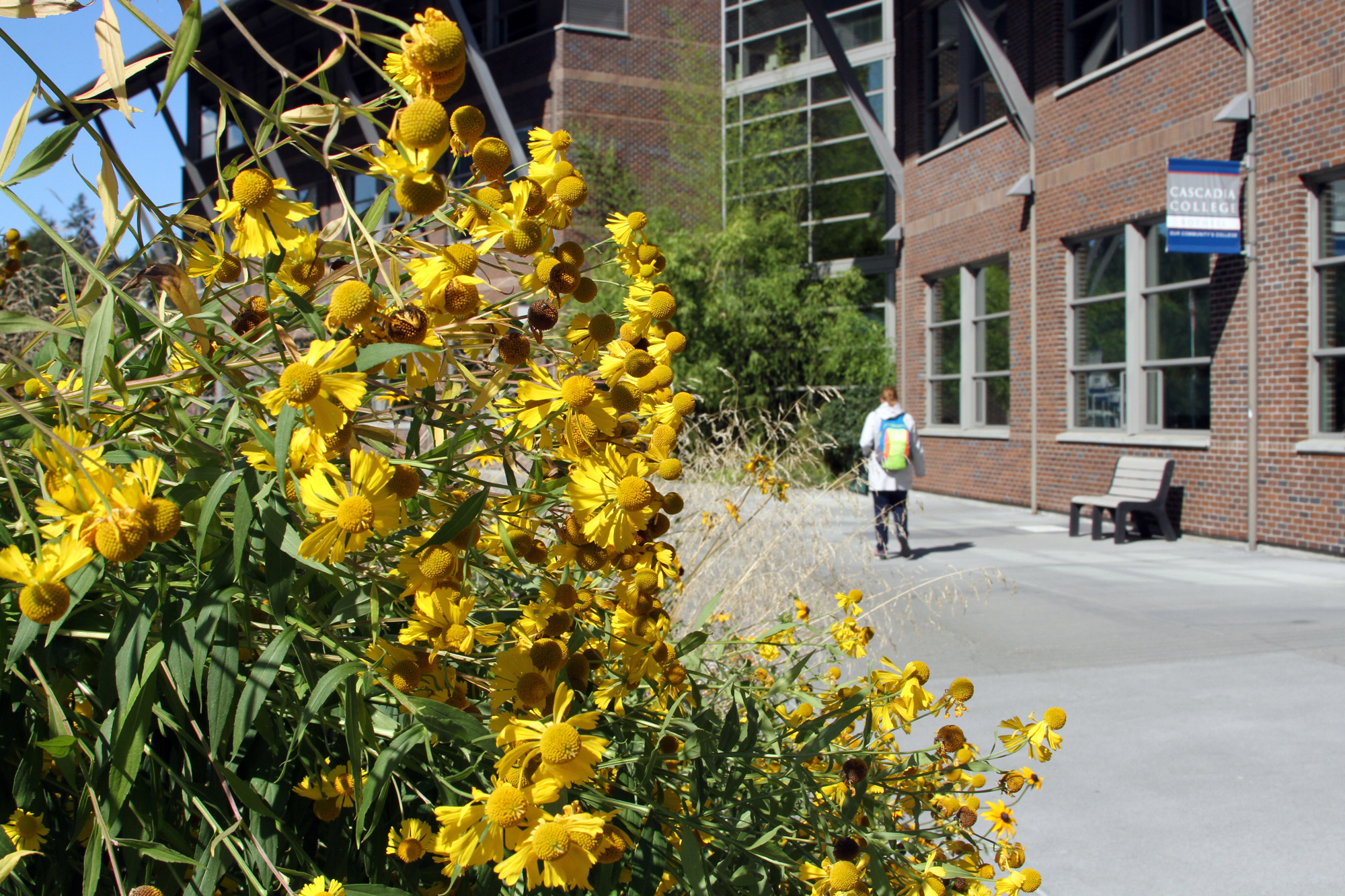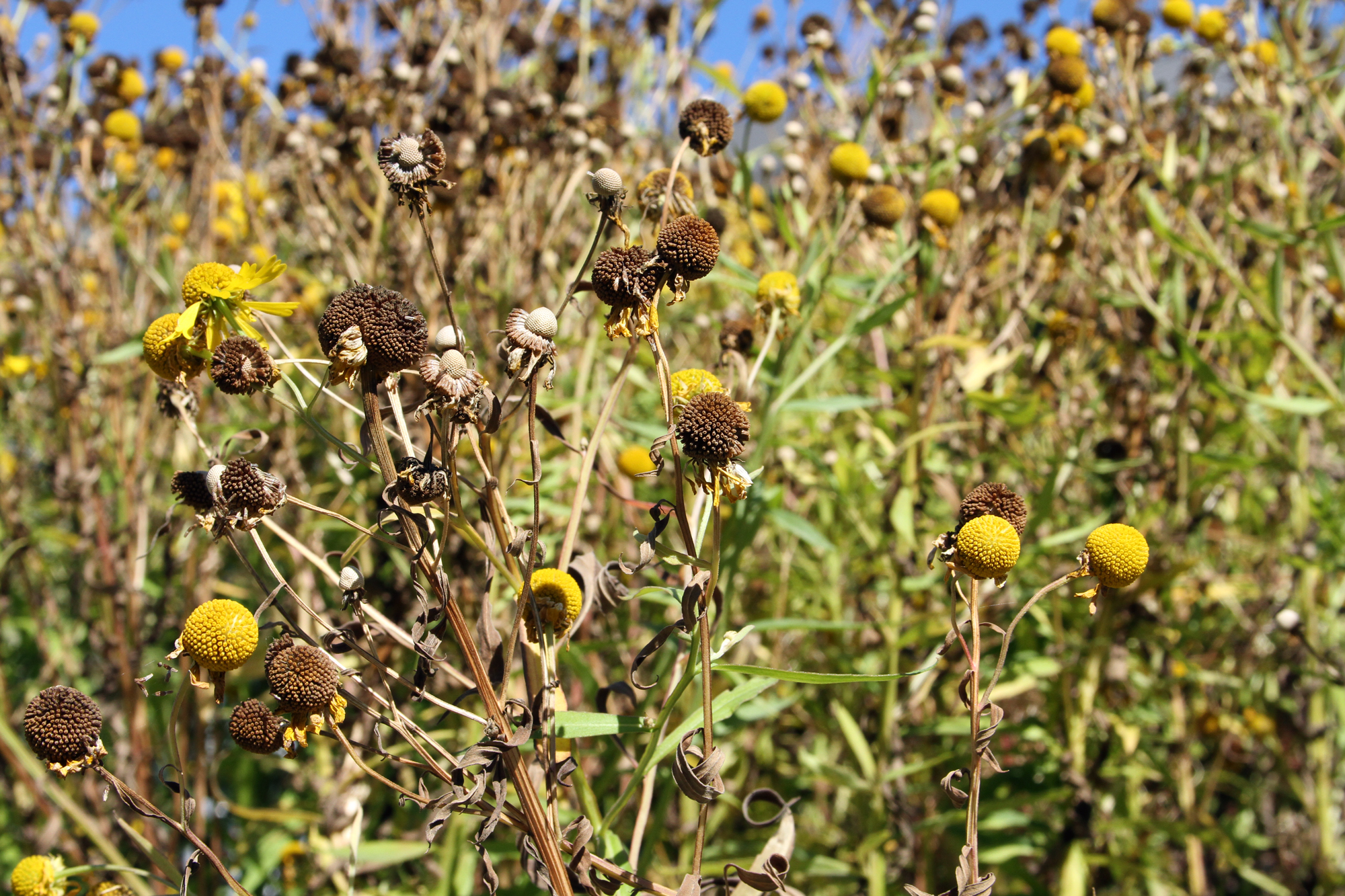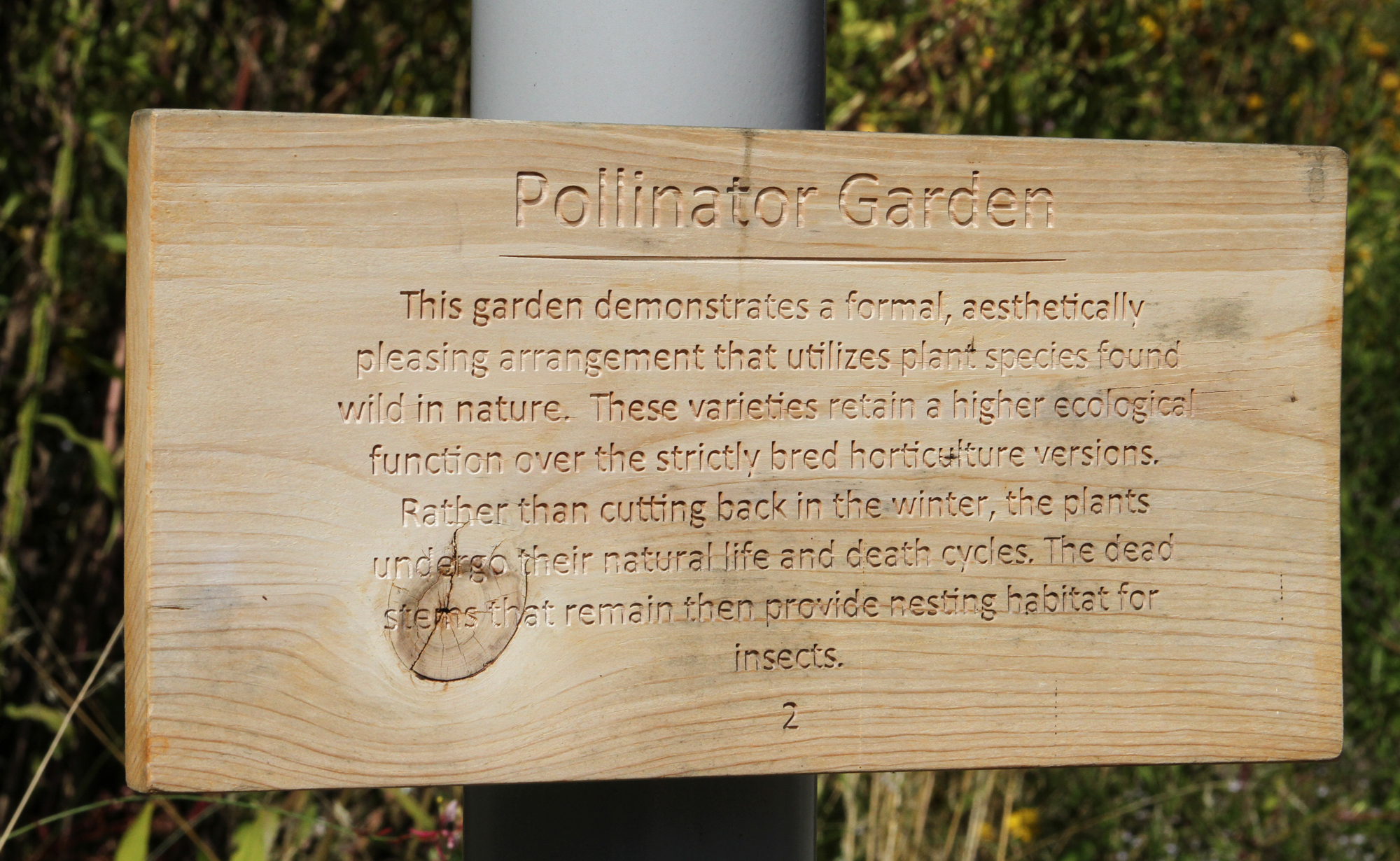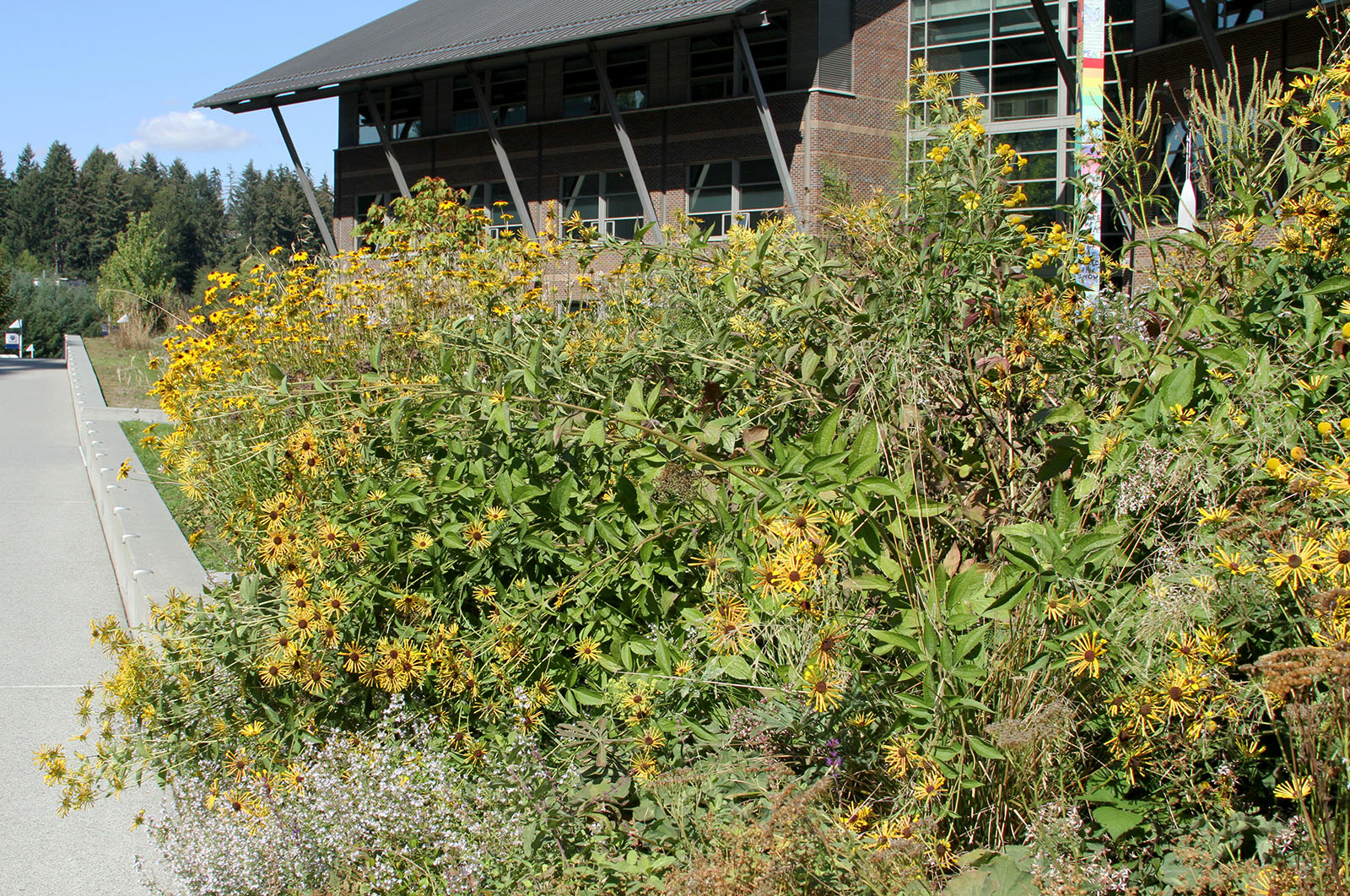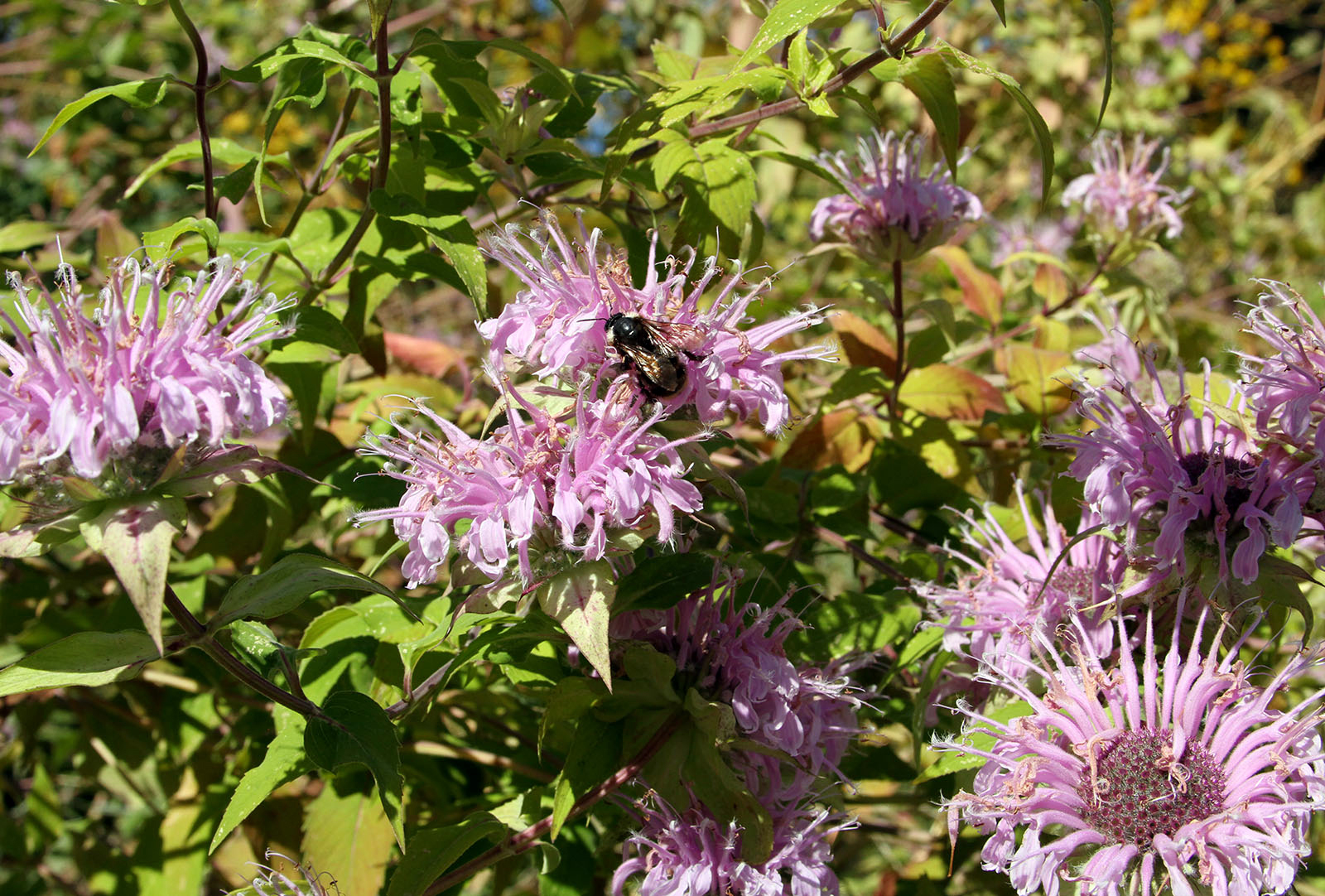An emerging idea as we blur the boundaries between ornamental and food gardening is the Food Forest. Based on principles of Permaculture, it seeks to increase the overall productive value of the landscape, increase species diversity and health, reduce resources needed to maintain the landscape, and provide for anyone (human, animal or insect) to eat from it. Food forests are modeled after native forests in their ecological functions and layers such as upper canopy, shrubs, groundcovers, root layers, etc.
On Seattle’s Beacon Hill, the Beacon Food Forest was established in 2012 as one of the first ideas of its kind — large scale, edible landscape on public land, accessible to anyone who wishes to eat from it. It was launched by a grassroots community effort and planted on land owned by Seattle Public Utilities. It draws visitors from around the country and the world.
But another project garnering recent attention is the Cascadia College (CC) Food Forest, on the campus shared by Cascadia and the University of Washington, Bothell (UWB). It is one of a few but growing number of college campuses in the U.S. which are maintained using sustainable practices and without pesticides or synthetic fertilizers. In fact, it has achieved Salmon Safe Certification, only the second college campus in the nation to do so.
This effort at UWB-CC is headed by Tyson Kemper, grounds supervisor of the joint campus. Tyson and a group of faculty and staff decided to eliminate pesticide use and adopt organic methods starting in 2006. As the campus is terraced uphill (and thus, upstream) from the restored wetlands of North Creek, the group realized the importance of keeping their runoff and groundwater as clean as possible. Tyson recalls, “Our facilities director was familiar with sustainable practices at Seattle University [developed there during Ciscoe Morris' tenure as head groundskeeper] and wanted a similar program here.”
During the planning phase for campus development, Tyson and his colleagues presented several sustainability projects to different groups on campus. "The Food Forest idea rose to the top of the wants list," and a triangular plot near the center of campus was chosen as a starting location. Other projects were added, such as edible container gardens, worm bins and the herb walk that greets everyone entering campus from a parking garage.
This place is buzzing.
One warm September afternoon, Tyson and Alexa Russo, sustainability coordinator at UWB, show us around the triangular Food Forest plot and its two neighboring plots: the Pollinator Garden and the Meadow. We spot two visitors sampling fruits off a tree a few yards away. The diversity and uniqueness of the Food Forest is immediately evident as we plant nerds constantly ask, “What’s that?!?”
“Oh, that’s a persimmon tree,” Tyson explains.
“Jujube.”
“Pawpaw.”
"Medlar, with these really Medieval-looking fruits.”
“Turkish quince.”
There are unusual varieties of gooseberry, goumi, aronia, other fruiting shrubs, and herbs sprouting up around the trees' bases, contributing to the layering. Most trees and shrubs are labeled with discrete wood stakes. Next door, the Pollinator Garden towers with late-season yarrows, asters and rudbeckias.
These are not your, er, garden-variety fruits, and that’s by design. Tyson wants visitors to see beyond the common apples, pears and plums they typically see. “Besides the sustainable aspect," he says, "this is here to educate and inspire people."
[Incidentally, we carry many of these unusual fruit trees at Swansons during certain times of year; but most of us haven’t had the chance seen them established and in full fruition.]
Alexa has produced printed information binders for the Pollinator Garden and Food Forest. "We want people to know what’s available here and how to use it," she says. Her future projects include a full-fledged book on these projects, and a survey initiative for pollinators on campus to address the question: "what types of landscapes best support pollinators?"
Has it been a challenge to get the campus community on board with sustainable practices and the Food Forest? Alexa and Tyson confirm that there were concerns about maintenance and variation from the "pristine" campus look. Their team has an ongoing mission to address expectations and perceptions of what is "healthy" and what is "beautiful."
"We're always reaching out to students and faculty," Tyson relates. "We explain the science behind what we’re doing, help them see the beauty of the landscape differently." The Meadow has been the most debated, a minimally maintained space (perceived by some as a "vacant lot") in close proximity to newer, modern buildings. But in light of the goals for sustainability, CC administrators strongly supported the idea.
Overall, the environmental and cost benefits of adopting these projects, and sustainable practices in general, were quickly obvious. "Within just a couple of months after we eliminated pesticides [in 2006], we saw insects and birds return to the campus in a strong way." In addition, "We reduced our mowing from 2-3 days per week to one day per week."
There have been unexpected human benefits, too. Students and staff from Asian countries have expressed surprise to see some of their hometown favorites growing here. And once, while Tyson was cutting down late fall chaff in the Meadow, a man native to Eastern Europe told him how much the plot reminded him of home.
"You just never know how people can be touched by this," Tyson marvels.
[Full disclosure: the author’s wife, forager extraordinaire, is on UWB staff and updates him regularly on the Food Forest's latest surprises.]
Click for the Food Forest and Pollinator Garden plant lists.
photos: Aimée Damman


